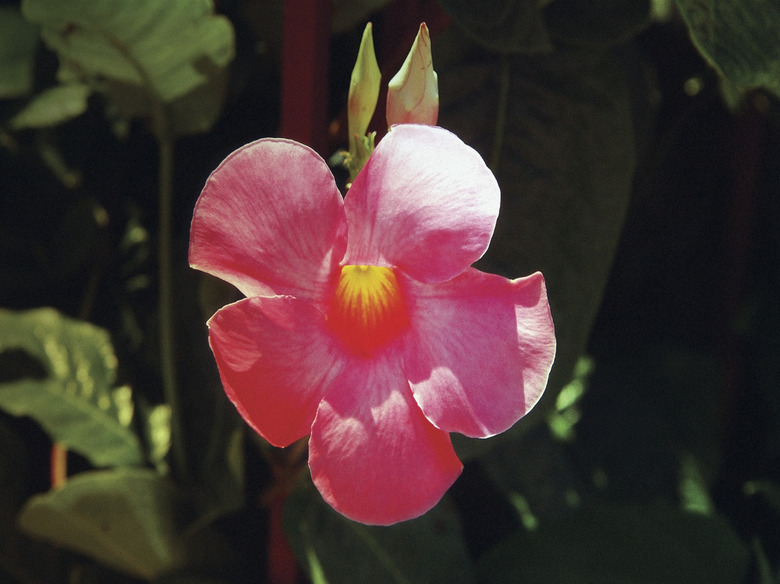How To Grow Cuttings From Mandevilla Plants
An exotic, warm-climate vine, mandevilla (Mandevilla spp.) provides big, pink, trumpet-shaped blooms nonstop throughout summer, returning for occasional repeat performances through much of the year. Mandevilla is suitable for growing in U.S. Department of Agriculture plant hardiness zones 9 through 11. In cooler climates, plant mandevilla in a container with an attractive trellis for the vine to climb, then bring the plant indoors during the winter. Propagate mandevilla by taking softwood cuttings from the plant in spring and early summer.
Step 1
Step 1
Fill a 5-inch planting container with a well-draining potting mix. Commercial potting soils are fine, or you can use a 50-50 combination of sand and perlite, or peat moss and sand. Water the potting mix until it is evenly moist throughout, but not soggy.
- An exotic, warm-climate vine, mandevilla (Mandevilla spp.)
- In cooler climates, plant mandevilla in a container with an attractive trellis for the vine to climb, then bring the plant indoors during the winter.
Step 2
Step 2
Cut three stem tips from a healthy, pest-free mandevilla plant. Make each cutting 2 to 3 inches long, with two or three leaves at the top. Use a sharp knife to cut the stems just below a node — a small bump protruding from the stem where a new leaf or buds is about to emerge. Pinch the leaves from the lower half of the stem.
Step 3
Step 3
Make three planting holes in the moist potting mixture with your finger or a small stick. Space the holes evenly around the outside edge of the pot. Dip each stem in rooting hormone, which can be powdered, liquid or gel. Plant the stems in the holes, with the leaves just above the surface of the soil. Pat the soil gently around the stems.
- Cut three stem tips from a healthy, pest-free mandevilla plant.
- Make three planting holes in the moist potting mixture with your finger or a small stick.
Step 4
Step 4
Cover the pot with a plastic dome or a clear plastic bag closed securely with a rubber band. If you use a plastic bag, insert two or three plastic straws in the pot to support the plastic above the leaves. Place the pot in normal room temperatures and bright, indirect light.
Step 5
Step 5
Open the bag for a few minutes every week to provide air circulation and prevent too much moisture buildup. Mist inside the bag if the soil feels dry to the touch.
Step 6
Step 6
Remove the cuttings from the pot when they display healthy new growth — usually about a month after planting. Tease the roots apart gently with your fingers, then plant each cutting in a 3-inch pot. Pinch the tip of each cutting to encourage bushy growth.
- Cover the pot with a plastic dome or a clear plastic bag closed securely with a rubber band.
- Remove the cuttings from the pot when they display healthy new growth — usually about a month after planting.
Step 7
Step 7
Plant mandevilla in a permanent location, or move it to a larger pot, in late summer.
Tip
Mandevilla is mildly toxic and should not be ingested. Wear gloves when pruning the plant because the milky sap may cause skin irritation.
Things Needed
- 5-inch planting container
- Well-draining potting mix
- Sharp knife
- Small stick
- Liquid, powdered or gel rooting hormone
- Plastic dome or clear plastic bag with rubber band
- Plastic straws
- 3-inch pots
References
- New Mexico State University Extension: Mandevilla Vine
- The American Horticultural Society, Plant Propagation; Alan Toogood, ed.
- The New Sunset Western Garden Book; Kathleen Norris Brenzel, ed.
- Floridata: Mandevilla Spp.
- National Gardening Association: Propagation of Mandevilla
- University of Florida IFAS Extension: Mandevilla
- California Poison Control System: Know Your Plants!
